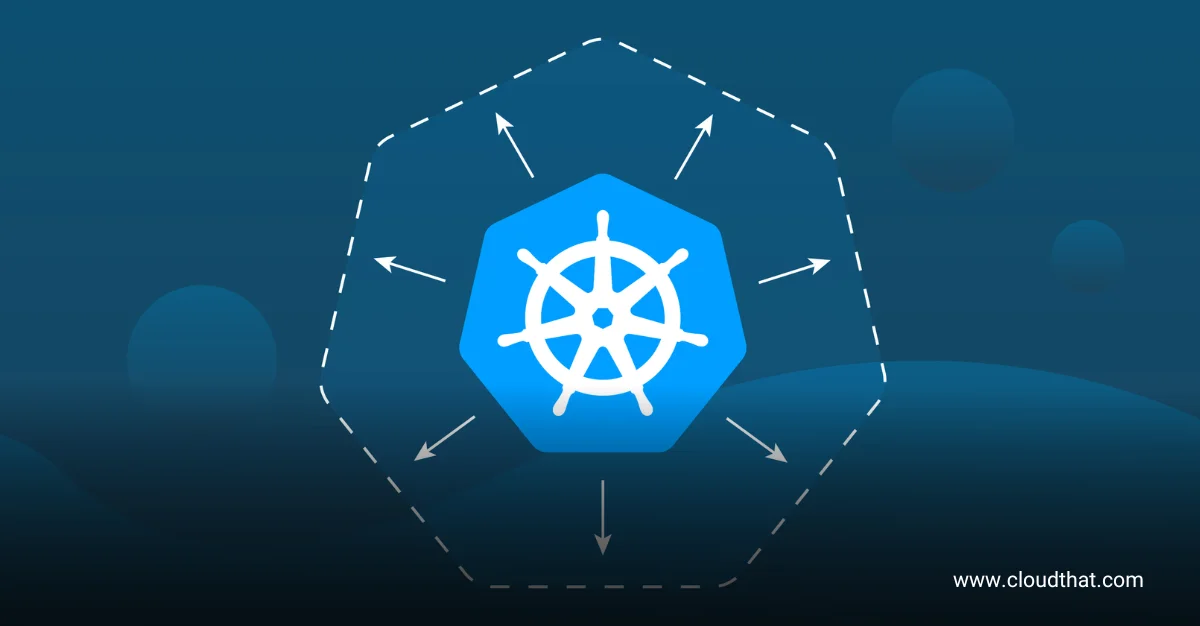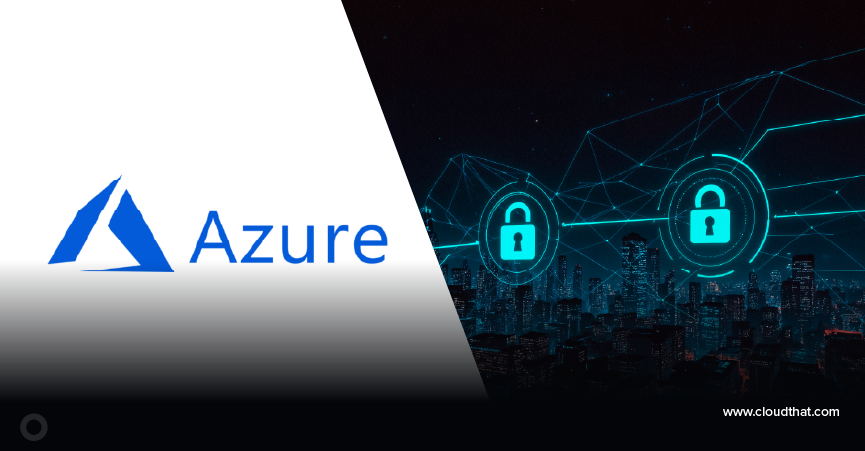|
Voiced by Amazon Polly |
Introduction
Container orchestration has become the backbone of modern cloud-native applications, enabling organizations to deploy, scale, and manage containerized workloads efficiently. Amazon Elastic Kubernetes Service (EKS) provides a fully managed Kubernetes control plane that eliminates the complexity of running Kubernetes infrastructure while maintaining full compatibility with upstream Kubernetes. This comprehensive guide explores advanced Amazon EKS implementation strategies, cluster management best practices, and optimization techniques for production environments.
Pioneers in Cloud Consulting & Migration Services
- Reduced infrastructural costs
- Accelerated application deployment
Amazon EKS Architecture
Amazon EKS operates on a shared responsibility model, where AWS manages the Kubernetes control plane components, including the API server, etcd, and controller manager, while customers manage the worker nodes and application workloads. This architecture provides high availability across multiple Availability Zones, automatic security patching, and seamless integration with AWS services.
The Amazon EKS control plane runs in a dedicated AWS-managed VPC, communicating with worker nodes through secure endpoints. This separation ensures control plane isolation while maintaining network connectivity for cluster operations. Amazon EKS supports both Amazon EC2 and Amazon Fargate compute options, providing flexibility in workload deployment strategies.
Amazon EKS Cluster Design and Planning
Network Architecture Considerations
Proper network design forms the foundation of secure and scalable Amazon EKS deployments. VPC configuration should include dedicated subnets for worker nodes, with separate subnets for public and private resources. Private subnets host worker nodes and application pods, while public subnets contain load balancers and NAT gateways for outbound internet access.
Subnet sizing requires careful planning to accommodate pod IP allocation. Each worker node reserves IP addresses for pods based on instance type and CNI configuration. The VPC CNI plugin allocates secondary IP addresses from subnets to pods, requiring sufficient IP space for scaling requirements. Consider using multiple smaller subnets across Availability Zones rather than large single subnets to improve fault isolation.
Security group configuration follows the principle of least privilege, with separate security groups for control plane communication, worker node traffic, and application-specific requirements. Amazon EKS automatically creates and manages security groups for control plane communication, but additional security groups may be required for specific application needs.
Node Group Strategy
Amazon EKS supports multiple node group types, including managed node groups, self-managed node groups, and Fargate profiles. Managed node groups provide automated provisioning, scaling, and lifecycle management with minimal operational overhead. Self-managed node groups offer greater customization options for specialized workload requirements.
Instance type selection depends on workload characteristics, including CPU, memory, network, and storage requirements. Mixed instance types within node groups provide cost optimization through spot instances while maintaining availability through on-demand instances. Auto Scaling Groups enable automatic node scaling based on resource utilization and pod scheduling requirements.
Amazon Fargate profiles eliminate node management entirely by providing serverless compute for pods. Fargate works well for batch workloads, development environments, and applications with predictable resource requirements. However, Amazon Fargate has limitations, including no support for DaemonSets, privileged containers, or host networking.
Advanced Amazon EKS Configuration
Identity and Access Management
Amazon EKS integrates deeply with AWS IAM for authentication and authorization. Service accounts can assume AWS IAM roles through AWS IAM Roles for Service Accounts (IRSA), enabling fine-grained permissions for applications without storing credentials in containers. This integration eliminates the need for long-lived access keys while providing audit trails through AWS CloudTrail.
Kubernetes RBAC (Role-Based Access Control) provides authorization within the cluster, working alongside AWS IAM for comprehensive access control. RBAC policies define permissions for users, groups, and service accounts to access Kubernetes resources. Best practices include creating role-based access patterns that align with organizational structure and implementing least-privilege principles.
AWS IAM Authenticator enables integration with existing identity providers through OIDC, SAML, or other authentication mechanisms. This integration enables organizations to utilize their existing identity management systems while maintaining centralized access control.
Networking and Service Mesh
The Amazon VPC CNI plugin provides native VPC networking for pods, enabling direct communication between pods and other AWS resources without NAT or proxy layers. Advanced CNI features include custom networking for IP address conservation, security groups for pods for fine-grained network security, and prefix delegation for improved IP efficiency.
Implementing a service mesh with AWS App Mesh or Istio provides advanced traffic management, security, and observability features. Service mesh enables features like traffic splitting for canary deployments, mutual TLS for service-to-service communication, and distributed tracing for complex microservices architectures.
Load balancing strategies include Application Load Balancers for HTTP/HTTPS traffic, Network Load Balancers for TCP/UDP traffic, and internal load balancers for east-west traffic. The AWS Load Balancer Controller automates load balancer provisioning and configuration based on Kubernetes ingress and service resources.
Storage and Data Management
Persistent Storage Solutions
Amazon EKS supports multiple storage options through the Container Storage Interface (CSI). The Amazon EBS CSI driver provides block storage for stateful applications, supporting various volume types, including gp3, io1, and io2 for different performance requirements. EBS volumes offer high durability and performance, but are limited to a single Availability Zone attachment.
The Amazon EFS CSI driver enables shared file storage across multiple pods and Availability Zones. EFS works well for applications requiring shared storage, content management systems, and data analytics workloads. Amazon EFS offers automatic scaling and high availability, but may experience higher latency compared to block storage.
Amazon FSx CSI drivers support high-performance file systems, including FSx for Lustre for HPC workloads and FSx for NetApp ONTAP for enterprise applications. These specialized file systems offer optimized performance for specific use cases, integrating seamlessly with Amazon EKS.
Backup and Disaster Recovery
Backup strategies for Amazon EKS include both cluster configuration and persistent data protection. Velero provides comprehensive backup and restore capabilities for Kubernetes resources and persistent volumes. Velero integrates with AWS services, including Amazon S3 for backup storage and EBS snapshots for volume backups.
Cluster configuration backup includes YAML manifests, Helm charts, and custom resource definitions. GitOps approaches, using tools like ArgoCD or Flux, provide declarative configuration management and automated deployment capabilities. Infrastructure-as-code tools, such as Terraform or AWS CloudFormation, enable reproducible provisioning of clusters.
Cross-region disaster recovery requires replicating both cluster configuration and persistent data. Multi-region Amazon EKS deployments offer geographic redundancy, but require careful consideration of data consistency, network latency, and cost implications.
Monitoring and Observability
Comprehensive Monitoring Strategy
Amazon EKS monitoring integrates Kubernetes-native tools with AWS services to provide comprehensive observability. Amazon CloudWatch Container Insights provides cluster and node-level metrics, including CPU, memory, network, and storage utilization. Custom metrics through CloudWatch enable application-specific monitoring and alerting.
Prometheus and Grafana provide detailed metrics collection and visualization for Kubernetes environments. The AWS Managed Service for Prometheus eliminates operational overhead while maintaining compatibility with existing Prometheus configurations. Grafana dashboards provide customizable visualization for cluster and application metrics.
Log aggregation through Amazon CloudWatch Logs or third-party solutions like Elasticsearch enables centralized log analysis and troubleshooting. Fluent Bit or Fluentd agents collect logs from containers and forward them to centralized storage with filtering and enrichment capabilities.
Distributed Tracing and APM
AWS X-Ray provides distributed tracing for applications running on Amazon EKS, enabling visualization of the request flow across microservices. X-Ray integration requires minimal code changes and provides insights into performance bottlenecks and error sources.
Application Performance Monitoring (APM) solutions, such as Datadog, New Relic, or Dynatrace, provide comprehensive application insights, including code-level visibility, database query analysis, and user experience monitoring. These tools integrate with Amazon EKS through agents or sidecars deployed alongside applications.
Security Best Practices
Cluster Security Hardening
Amazon EKS security adheres to defense-in-depth principles, employing multiple layers of protection. Cluster endpoint access control restricts API server access to authorized networks and users. Private endpoint access ensures control plane communication remains within the Amazon VPC, while public endpoint access can be restricted to specific IP ranges.
Pod Security Standards replace deprecated Pod Security Policies, providing standardized security controls for pod specifications. Security contexts define privilege and access control settings for containers, including user IDs, capabilities, and filesystem permissions.
Network policies provide microsegmentation for pod-to-pod communication, enabling zero-trust networking within the cluster. Calico or Cilium network policy engines offer advanced features, including DNS-based policies and application-layer filtering.
Image Security and Compliance
Container image security begins with selecting a secure base image and performing vulnerability scans. Amazon ECR provides image vulnerability scanning through integration with Clair or Snyk. Automated scanning identifies known vulnerabilities and guides remediation.
Image signing and verification ensure container integrity throughout the deployment pipeline. Tools like Notary or Sigstore provide cryptographic signing and verification capabilities. Admission controllers can enforce image signature requirements and prevent deployment of unsigned or vulnerable images.
Runtime security monitoring detects anomalous behavior and potential security threats. Tools like Falco provide runtime threat detection based on system call analysis and behavioral patterns. Integration with AWS Security Hub enables centralized management of security findings.
Cost Optimization Strategies
Resource Right-Sizing
Amazon EKS cost optimization requires understanding resource utilization patterns and rightsizing compute resources to optimize costs. Kubernetes resource requests and limits define minimum and maximum resource allocation for containers. Proper resource specification prevents resource waste while ensuring application performance.
Vertical Pod Autoscaler (VPA) provides recommendations for optimal resource requests based on historical usage patterns. Horizontal Pod Autoscaler (HPA) scales pod replicas based on CPU, memory, or custom metrics. Cluster Autoscaler adjusts node group size based on pod scheduling requirements.
Spot instances provide significant cost savings for fault-tolerant workloads. Mixed instance types and purchasing options within node groups strike a balance between cost and availability. Spot instance interruption handling requires the ability to terminate pods gracefully and reschedule them.
Reserved Capacity and Savings Plans
AWS Savings Plans and Reserved Instances provide cost savings for predictable workloads. Compute Savings Plans offer flexibility across instance types and regions while providing significant discounts. Reserved Instances provide the highest savings for specific instance types and regions.
Amazon Fargate Spot provides serverless compute at reduced costs for fault-tolerant workloads. Amazon Fargate Spot works well for batch processing, development environments, and applications that can handle interruptions gracefully.
Advanced Use Cases and Patterns
Multi-Tenant Cluster Management
Multi-tenancy in Amazon EKS requires careful consideration of isolation, security, and resource allocation. Namespace-based tenancy provides logical separation with RBAC and resource quotas. Network policies enforce traffic isolation between tenants while shared services remain accessible.
Cluster-level tenancy provides stronger isolation through dedicated clusters per tenant. This approach increases operational overhead but provides complete isolation for security-sensitive workloads. Shared services clusters can provide common functionality across tenant clusters.
CI/CD Integration
Amazon EKS integrates with various CI/CD platforms, including AWS CodePipeline, Jenkins, GitLab CI, and GitHub Actions. GitOps workflows, such as those enabled by ArgoCD or Flux, provide declarative deployment management with automated synchronization from Git repositories.
Blue-green and canary deployment strategies minimize deployment risk through gradual traffic shifting. Service mesh capabilities enable sophisticated traffic management for deployment strategies. Automated rollback mechanisms provide quick recovery from failed deployments.
Troubleshooting and Performance Tuning
Common Issues and Solutions
Amazon EKS troubleshooting requires understanding both Kubernetes and AWS-specific components. Common issues include networking problems, resource constraints, and configuration errors. Systematic troubleshooting approaches include checking cluster status, node health, and pod events.
Performance tuning involves optimizing resource allocation, network configuration, and storage performance. Cluster autoscaling configuration affects scaling responsiveness and cost. Node group configuration impacts resource utilization and application performance.
Future Trends and Considerations
Amazon EKS continues evolving with new features and capabilities. ARM-based instances provide cost and performance benefits for compatible workloads. GPU support enables machine learning and high-performance computing workloads. Edge computing with Amazon EKS Anywhere extends Kubernetes to on-premises and edge locations.
Serverless containers with Fargate eliminate node management while providing compatibility with Kubernetes. Enhanced security features, including Pod Security Standards and runtime security monitoring, improve the cluster’s security posture.
Conclusion
Amazon EKS offers a robust platform for container orchestration, combining the power of Kubernetes with the reliability and integration capabilities of AWS. Successful Amazon EKS implementations require careful planning of network architecture, security controls, and operational procedures. Organizations investing in Amazon EKS expertise can achieve significant improvements in application deployment velocity, operational efficiency, and cost optimization.
Drop a query if you have any questions regarding Amazon EKS and we will get back to you quickly.
Empowering organizations to become ‘data driven’ enterprises with our Cloud experts.
- Reduced infrastructure costs
- Timely data-driven decisions
About CloudThat
CloudThat is an award-winning company and the first in India to offer cloud training and consulting services worldwide. As a Microsoft Solutions Partner, AWS Advanced Tier Training Partner, and Google Cloud Platform Partner, CloudThat has empowered over 850,000 professionals through 600+ cloud certifications winning global recognition for its training excellence including 20 MCT Trainers in Microsoft’s Global Top 100 and an impressive 12 awards in the last 8 years. CloudThat specializes in Cloud Migration, Data Platforms, DevOps, IoT, and cutting-edge technologies like Gen AI & AI/ML. It has delivered over 500 consulting projects for 250+ organizations in 30+ countries as it continues to empower professionals and enterprises to thrive in the digital-first world.
FAQs
1. How do I optimize Amazon EKS cluster costs while maintaining performance?
ANS: – Use Spot instances mixed with On-Demand, implement Cluster Autoscaler and HPA, right-size pods using VPA recommendations, consider Fargate for unpredictable workloads, and use AWS Savings Plans for predictable workloads.
2. What are the best practices for securing an Amazon EKS cluster?
ANS: – Enable private endpoint access, implement Pod Security Standards, utilize IRSA instead of storing credentials, enable audit logging, implement network policies, regularly scan container images, and utilize runtime security monitoring.
3. How should I handle persistent storage in Amazon EKS for stateful applications?
ANS: – Utilize the Amazon EBS CSI driver for high-performance block storage, implement StatefulSets for stable identities, leverage Amazon EFS for shared storage, establish backup strategies with Velero, and monitor storage performance and costs.

WRITTEN BY Niti Aggarwal


 Login
Login


 October 13, 2025
October 13, 2025 PREV
PREV











Comments